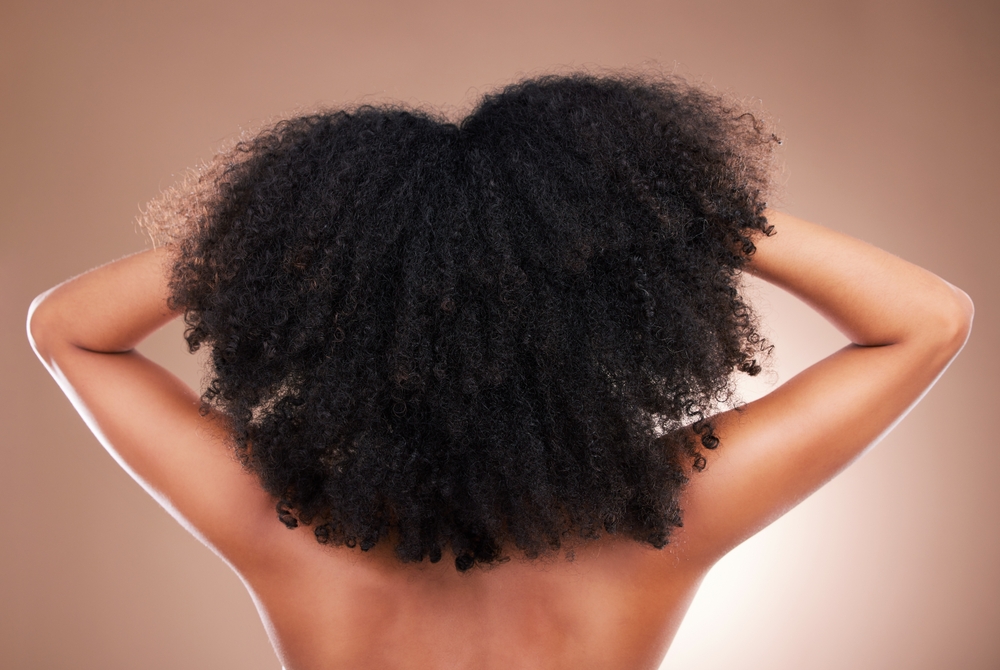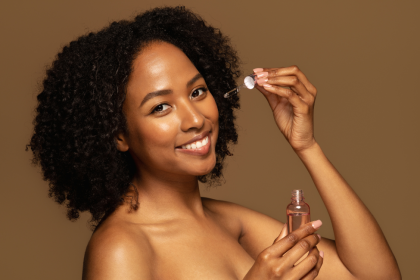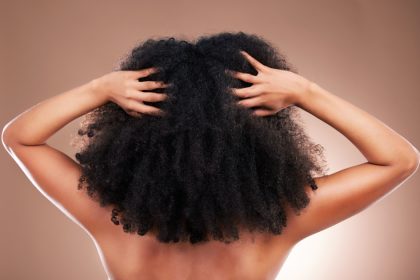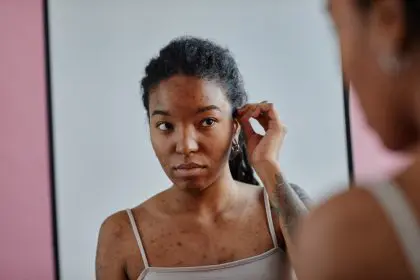You probably think your hair texture is just genetic luck of the draw – you got the curly gene or the straight gene and that’s that. But what if your hair has been trying to tell you something important about your health this whole time, and you’ve been too busy fighting with styling tools to listen? Your hair texture isn’t just about aesthetics – it’s actually a surprisingly accurate health reporter that updates its story every single day.
Most people only pay attention to their hair when it’s having a bad day, but the subtle changes in texture, thickness, and behavior can reveal everything from nutrient deficiencies to hormone imbalances to stress levels that you might not even realize are affecting you. Your hair follicles are basically tiny health monitors working 24/7 to give you intel about what’s happening inside your body.
The problem is that we’ve been trained to see hair changes as cosmetic annoyances rather than potential health signals. But once you know what to look for, your hair becomes like having a personal health detective growing right out of your scalp.
The hormone story your hair tells every day
Your hair texture is incredibly sensitive to hormonal fluctuations, often changing weeks or months before you notice other symptoms of hormone imbalances. When your thyroid isn’t functioning optimally, your hair often becomes coarser, drier, or more brittle before you feel the fatigue or weight changes that typically get blamed on thyroid issues.
Estrogen and progesterone changes during menstrual cycles, pregnancy, or menopause can dramatically alter hair texture. Many women notice their hair becomes finer or changes curl pattern during pregnancy, then shifts again postpartum as hormone levels readjust. These aren’t just temporary annoyances – they’re your hair responding to significant internal changes.
Androgen levels also play a huge role in hair texture. Higher levels of hormones like testosterone can make hair coarser and thicker, while also potentially causing hair loss in genetically susceptible areas. If your hair texture suddenly becomes much coarser or you notice changes in growth patterns, it might be worth investigating your hormone levels rather than just switching shampoos.
The nutritional deficiency detective work
Your hair follicles are some of the most metabolically active cells in your body, which means they’re often the first to suffer when you’re not getting adequate nutrition. Iron deficiency doesn’t just cause hair loss – it can make your existing hair become finer, more fragile, and less manageable before you even notice you’re losing strands.
Protein deficiency shows up in hair texture changes long before it causes obvious muscle wasting or other dramatic symptoms. If your normally thick hair starts feeling limp and lifeless, or if curly hair starts losing its bounce and definition, your body might be struggling to produce the keratin proteins that give hair its structure and strength.
B vitamin deficiencies, particularly B12, biotin, and folate, can cause hair to become dry, brittle, and prone to breakage. Zinc deficiency often manifests as changes in hair texture and growth patterns before causing the skin issues or immune problems that people typically associate with zinc insufficiency.
The stress signals hiding in your strands
Chronic stress doesn’t just cause hair loss – it can completely change your hair’s texture and behavior in ways that are often dismissed as “just getting older” or blamed on weather changes. Prolonged elevation of cortisol levels can make hair become drier, more brittle, and harder to style than usual.
The interesting thing about stress-related hair changes is that they often appear several months after the stressful period, because hair reflects what was happening in your body when that particular strand was forming in the follicle. So if your hair texture suddenly changes for no apparent reason, think back to what was happening in your life three to six months ago.
Acute stress can also trigger changes in hair growth cycles that affect texture. The hair that grows during high-stress periods often has a different diameter and structure than hair grown during calmer times, creating inconsistencies in texture that can make your hair feel unpredictable and hard to manage.
The autoimmune alerts you might be missing
Autoimmune conditions often announce themselves through hair texture changes before other symptoms become obvious. Conditions like lupus, rheumatoid arthritis, or thyroid autoimmune disorders can cause hair to become finer, more fragile, or change curl patterns as your immune system affects hair follicle function.
Scalp conditions like seborrheic dermatitis or psoriasis can change how hair grows and feels, creating texture changes that people often attribute to product buildup or environmental factors. If your hair texture changes are accompanied by scalp irritation, flaking, or unusual oiliness, it might be worth investigating whether an underlying inflammatory condition is involved.
The tricky part is that autoimmune-related hair changes are often subtle and develop gradually, making them easy to dismiss as normal aging or seasonal changes. But persistent texture changes that don’t respond to typical hair care adjustments might warrant a deeper health investigation.
The medication effects nobody warns you about
Many common medications can alter hair texture in ways that people rarely connect to their prescriptions. Antidepressants, blood pressure medications, cholesterol drugs, and even some supplements can change how your hair grows and feels, often in ways that develop gradually over months of use.
Birth control pills and hormone replacement therapy are particularly notorious for changing hair texture, but the effects can be so gradual that people don’t make the connection. Some people notice their hair becomes finer or loses curl definition after starting hormonal contraceptives, while others experience the opposite effect.
Chemotherapy drugs obviously cause dramatic hair changes, but many other medications can cause subtler texture alterations that affect your hair’s manageability and appearance. If you’ve noticed persistent hair texture changes after starting a new medication, it’s worth discussing with your healthcare provider.
The age-related changes that aren’t just about aging
While some hair texture changes are normal parts of aging, dramatic or sudden changes might indicate health issues that happen to be more common with age rather than being caused by age itself. Many people accept significant hair texture changes as inevitable aging when they might actually indicate treatable nutritional deficiencies or hormonal imbalances.
The hair follicles can reflect cumulative health impacts over time, so hair texture changes in your 40s, 50s, or beyond might be showing the effects of years of stress, poor nutrition, or undiagnosed health conditions rather than just the passage of time.
This is why it’s important to pay attention to the rate and nature of hair texture changes. Gradual changes over years are more likely to be normal aging, while sudden or dramatic changes in texture deserve attention regardless of your age.
What to do when your hair starts talking
The key to using hair texture as a health indicator is paying attention to patterns and changes rather than obsessing over day-to-day variations. Keep mental notes about how your hair behaves during different life circumstances – periods of stress, dietary changes, new medications, or major life events.
If you notice persistent changes in hair texture that don’t respond to adjustments in your hair care routine, consider whether they might be reflecting internal changes that deserve attention. This doesn’t mean every bad hair day indicates a health crisis, but dramatic or persistent changes might be worth discussing with a healthcare provider.
Document texture changes with photos if possible, especially if you’re trying to determine whether changes are related to specific medications, life events, or health conditions. Your hair can provide valuable clues about your overall health status, but only if you’re paying attention to what it’s trying to tell you.
Remember that healthy hair texture can vary widely between individuals, but significant changes from your personal baseline are worth noting and potentially investigating further.
















